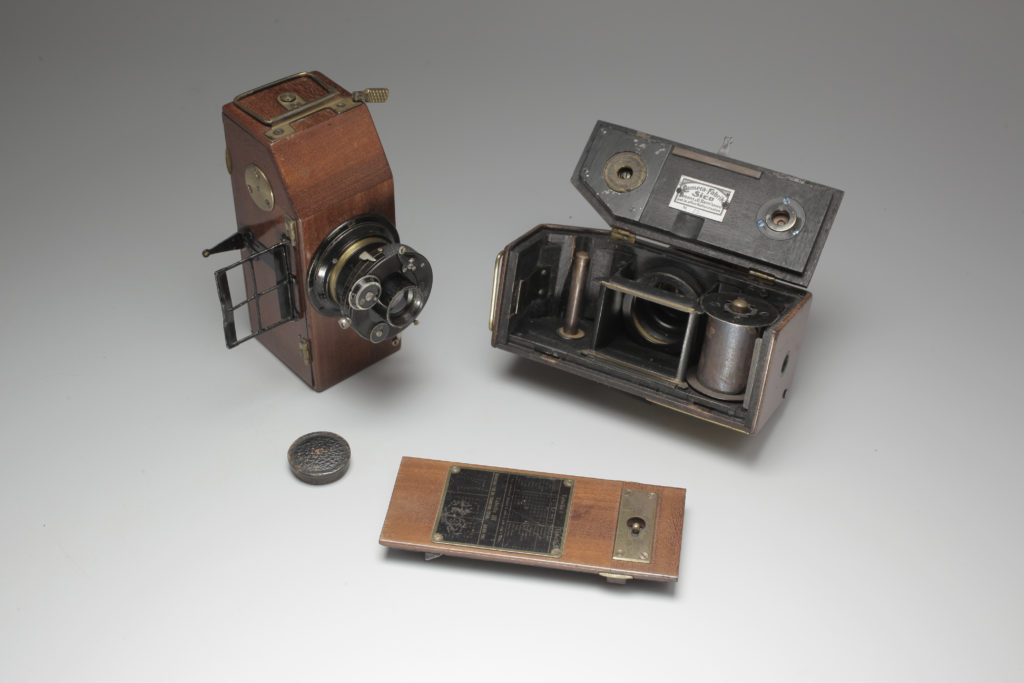Before the Leica
The emergence of 35 mm film prompted designers of optical and photographic equipment to use this new format, the quality of which was remarkable despite its small size. Although the Leica is generally held to have instigated the true launch of the use of 35 mm film in photography, other devices of a similar type were created before its appearance on the market in 1925.
Before the appearance of cinema film, the smallest format for photographic negative images was 4.5×6 cm, and the pictures were printed by contact most of the time. With 35 mm film, enlargement during printing became systematic.
The first device adapted to cinema film was made as early as 1905 by Dane Jens Poul Andersen. Yet it was not until 1913 that the first 35mm film camera, the Tourist Multiple, appeared on the market. As a result no fewer than 28 devices were designed, some of which were manufactured and others not, before the Leica was available to buy.
The appearance of the small format was still not set in stone at the time: the film was not always perforated and the size of the negative varied from 18×24 mm, the standard size of a photogram on cinema film, to larger formats. But political events and widespread scepticism concerning the possible use of so small a format in photography delayed its emergence for a few more years.


